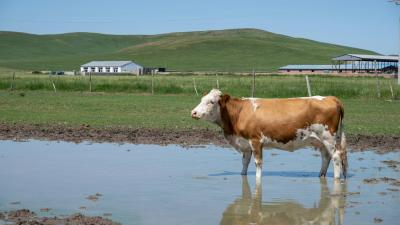Vegetarian U.S. Dietary Guidelines Have Half the Carbon Footprint of the Main Guidelines

The Dietary Guidelines for Americans’ Healthy Vegetarian Dietary Pattern has half the carbon footprint of the Guidelines’ main recommendations, according to a study in Nutrition Journal.
The authors say that the difference is due to the higher quantities of protein and types of protein in the main recommendations. The Healthy Vegetarian Dietary Pattern’s protein group replaces meat, poultry, and seafood with legumes, soy, nuts, and seeds, resulting in half the carbon footprint.
The researchers also say that the recommendations for soy milk in the Guidelines are not well publicized and that suggesting a specific recommendation for plant-based alternatives to dairy could lower greenhouse gas emissions substantially. The study cites research that found greenhouse gas emissions from the production of cow’s milk were more than five times that of soy milk.
The Guidelines’ main recommendations also had a bigger carbon footprint than the dietary guidelines of six other countries the study reviewed.
The Physicians Committee recently petitioned the White House to recommend policy changes, including to the Dietary Guidelines, that could help alleviate the climate crisis by cutting animal agriculture and promoting a plant-based diet.








